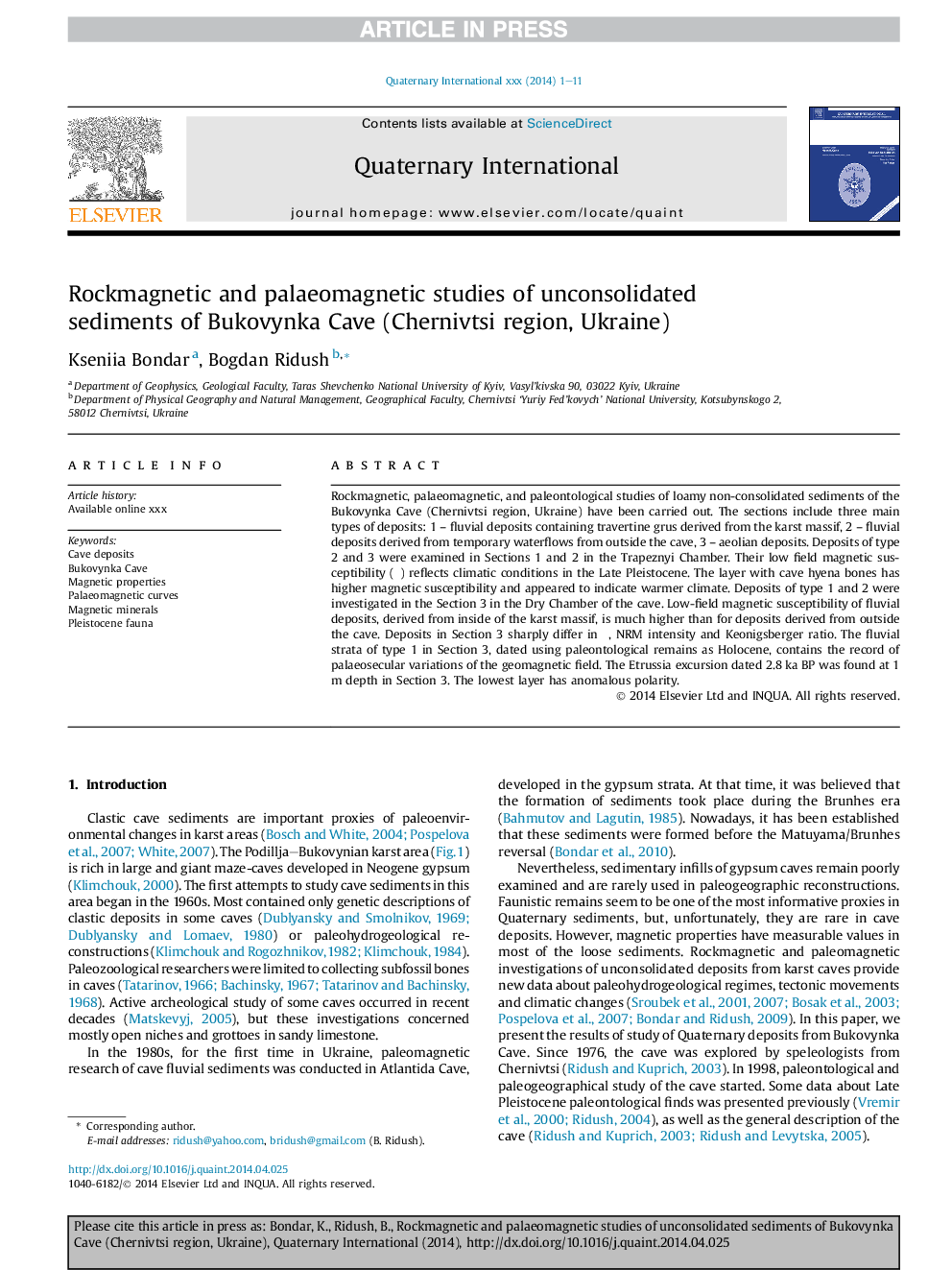| Article ID | Journal | Published Year | Pages | File Type |
|---|---|---|---|---|
| 7451911 | Quaternary International | 2015 | 11 Pages |
Abstract
Rockmagnetic, palaeomagnetic, and paleontological studies of loamy non-consolidated sediments of the Bukovynka Cave (Chernivtsi region, Ukraine) have been carried out. The sections include three main types of deposits: 1 - fluvial deposits containing travertine grus derived from the karst massif, 2 - fluvial deposits derived from temporary waterflows from outside the cave, 3 - aeolian deposits. Deposits of type 2 and 3 were examined in Sections 1 and 2 in the Trapeznyi Chamber. Their low field magnetic susceptibility (Ï) reflects climatic conditions in the Late Pleistocene. The layer with cave hyena bones has higher magnetic susceptibility and appeared to indicate warmer climate. Deposits of type 1 and 2 were investigated in the Section 3 in the Dry Chamber of the cave. Low-field magnetic susceptibility of fluvial deposits, derived from inside of the karst massif, is much higher than for deposits derived from outside the cave. Deposits in Section 3 sharply differ in Ï, NRM intensity and Keonigsberger ratio. The fluvial strata of type 1 in Section 3, dated using paleontological remains as Holocene, contains the record of palaeosecular variations of the geomagnetic field. The Etrussia excursion dated 2.8 ka BP was found at 1 m depth in Section 3. The lowest layer has anomalous polarity.
Related Topics
Physical Sciences and Engineering
Earth and Planetary Sciences
Geology
Authors
Kseniia Bondar, Bogdan Ridush,
